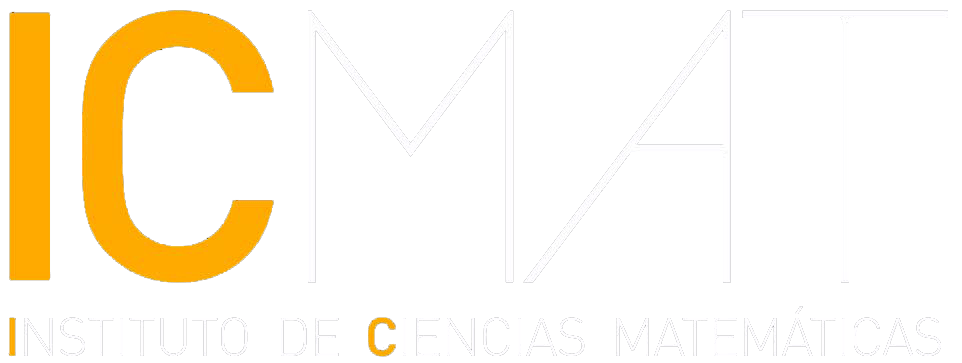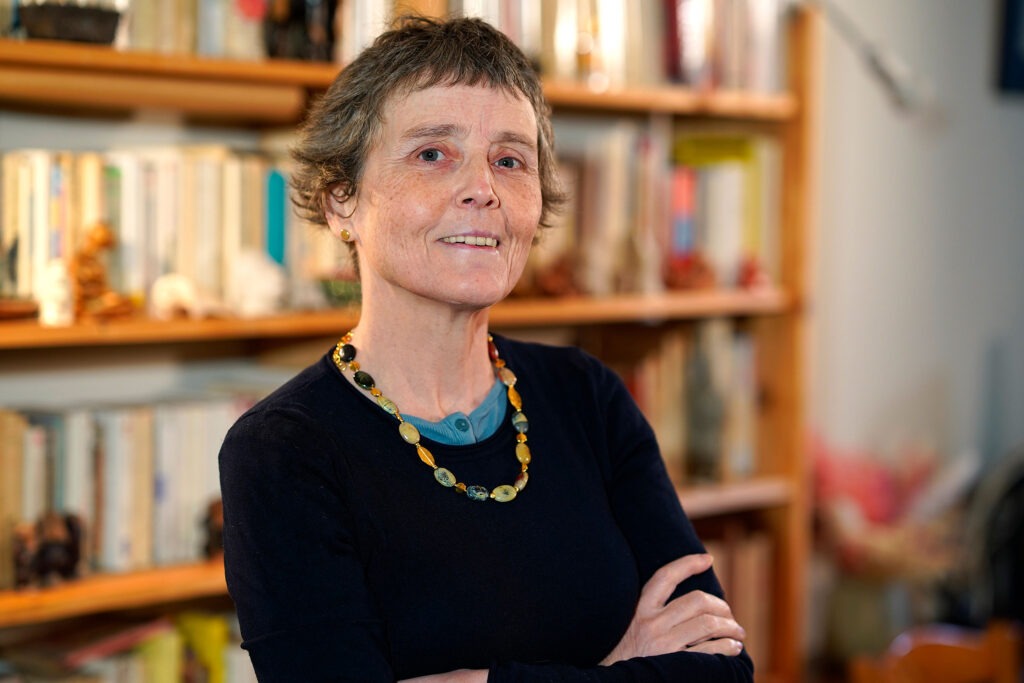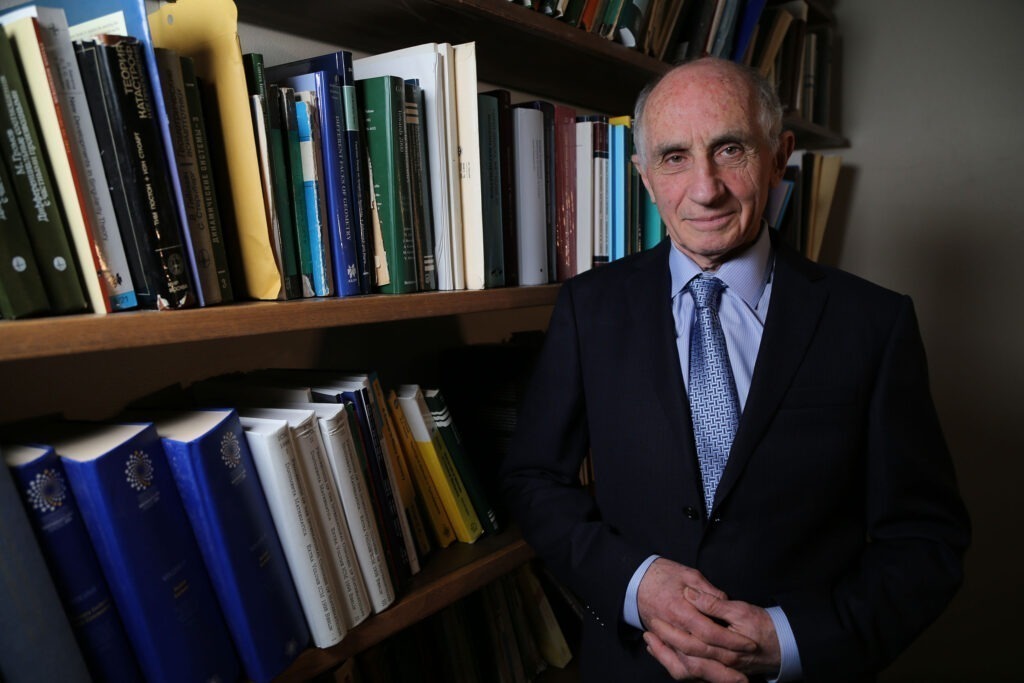She receives it together with Yakov Eliashberg (Stanford University, USA), for ‘advancing mathematical thinking by bridging two key areas of geometry’: algebraic geometry and symplectic geometry.
Laura M. Iraola (ICMAT)
On February 14, the BBVA Foundation announced the names of the winners of its 16th Frontiers of Knowledge Award in Basic Sciences. This year’s winners were Claire Voisin of the French National Centre for Scientific Research (CNRS) and Yakov Eliashberg of Stanford University (USA). The jury singled out both researchers for their outstanding contributions in the areas of algebraic and symplectic geometry and the links between the two. ‘They have played a fundamental role in the development of these diverse aspects of geometry, in particular by adapting and linking concepts from both fields, crossing the boundary between the two disciplines,’ according to the jury’s decision.
Eliashberg has made fundamental contributions in symplectic geometry, a field that studies even-dimensional geometric objects that describe physical motion, such as variation of position or velocity. He also helped lay the foundations of symplectic topology, an area that focuses on the study of properties that do not change when geometric objects are deformed. Voisin is one of the world’s leading specialists in algebraic geometry, a classical area of mathematics that studies the solutions of equations defined by polynomials. This work has also recently earned her the Crafoord Prize in Mathematics 2024 ‘for her outstanding contributions to algebraic and complex geometry, including Hodge theory, algebraic cycles and hyperkähler geometry’.
Both Voisin and Eliashberg have a close relationship with Institute of Mathematical Sciences (ICMAT). Since 2020, Voisin has been a member of its External Scientific Advisory Committee and is very close to the group of Oscar García-Prada, CSIC research professor at ICMAT. Eliashberg is in contact with the group of Francisco Presas, CSIC research scientist at ICMAT.
In their work, both have independently applied tools from the other area -Vosin, from symplectic geometry, and Eliashberg, from algebraic geometry-, thus obtaining important results. ‘When you break down the boundaries between two areas of mathematics, it is very stimulating for researchers in our discipline, because it allows you to adopt a new language and possibly a new framework, a new way of looking at things from the other side, which allows you to go further. If you can frame a challenging problem from another perspective, sometimes you can find the way forward. This has been a fundamental contribution of Voisin and Eliashberg, who have driven the progress of mathematics by breaking down barriers between different areas of geometry’, comments Nigel Hitchin, Emeritus Savilian Professor of Geometry at the Mathematical Institute of the University of Oxford (UK), member of the jury of the prize and director of an ICMAT Laboratory, in the BBVA Foundation news item.
Claire Voisin (France, 1962) has held a PhD in mathematics from the Université Paris-Sud XI-Orsay since 1986. In the same year, she obtained a permanent contract as a researcher at the Centre National de la Recherche Scientifique (CNRS), where she became a senior researcher until 2016. She held the chair of Algebraic Geometry at the Collège de France from 2016 to 2020. Since then, she has been director of research at the Institut de Mathématiques de Jussieu-Paris Rive Gauche of the CNRS. Her area of research is algebraic geometry, where she has solved long-running problems such as the Kodaira problem and the Green Voisin conjecture. ‘She is a highly recognised mathematician with many prizes, including the Shaw Prize, known as the Eastern Nobel Prize,’ García-Prada explains. In addition to this, she has won the European Mathematical Society Prize (1992), the Clay Research Award (2008), the Ruth Lyttle Satter Prize in Mathematics (2007), the CNRS Gold Medal (2016) and the recent Crafoord Prize in Mathematics, received in January 2024. In addition, she was an invited speaker at the International Congress of Mathematicians (ICM) in 1994, and in 2010 she gave a plenary lecture. She has also co-directed the ERC Synergy Grant HyperK project together with O. Debarre, E. Macrì and D. Huybrechts. Voisin has been a member of the ICMAT External Scientific Advisory Board since 2020.
Yakov Eliashberg (Russia, 1946) is one of the leading specialists in symplectic geometry, an area in which he helped lay the foundations. He received his PhD from the University of Leningrad (now St. Petersburg, Russia) in 1972, when he started working at the University of Siktivkar (Republic of Komi). He was head of the Department of Mathematics at this institution until 1979. After the Soviet authorities removed him from a career in mathematics because he had applied for a visa to emigrate, Eliashberg worked as a software engineer at the Leningrad Accounting Institute from 1981 to 1987. In 1988 he moved to the United States and in 1989, after a period at the University of Berkeley, he became a professor at Stanford University, where he continues to work. He has also been a visiting professor at universities in Japan, Switzerland and the United Kingdom, and is an associate editor of the Journal of Symplectic Geometry and a member of the Editorial Board of the journal Geometry and Topology.
BBVA Foundation Frontiers of Knowledge Awards
The BBVA Foundation Frontiers of Knowledge Awards ‘recognise and encourage contributions of singular impact in science, technology, the humanities and music, especially those that significantly expand the scope of what is known in a discipline, make new fields emerge or build bridges between different disciplinary areas’.
Since their creation in 2008, these awards have been presented annually in each of their eight categories, covering the different branches of knowledge. They are endowed with 400,000 euros in each of these categories.
These prizes are awarded in collaboration with the Spanish National Research Council (CSIC), which is responsible for appointing the technical support committees, which make an initial assessment of the candidatures. It also chooses the chair of each of the juries in the different categories and collaborates in the appointment of the rest of the members.
—
This content has been automatically translated. The original text may differ slightly


